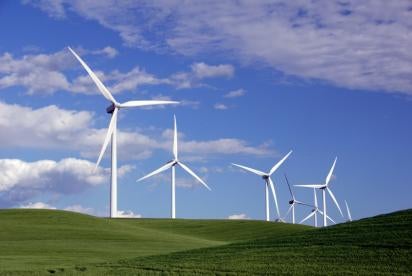In late 2014, a Wisconsin County Board of Health sent shock waves through the renewable energy community when it declared “infrasound/low frequency noise” from a wind farm to be a human health hazard. If confirmed, such a finding would have required the owner of the wind energy system to either shut down the turbines or abate the hazard – likely through acquisition of homes affected by the noise.
However, on Dec. 15, 2015, the Health Director for Brown County, Wisconsin, announced that she could not establish a link between health effects that residents of Brown County asserted they were suffering and eight 2.5 megawatt wind turbines. The Health Director’s determination derailed, for now, the unprecedented 2014 action taken by the Brown County Board of Health to declare alleged infrasound/low frequency noise, or “ILFN,” from the Duke Energy Shirley Windpower installation in the Town of Glenmore to be a human health hazard pursuant to Brown County and State of Wisconsin law.
Many across the United States had been closely watching the 2014 Brown County Board of Health human health hazard finding, including renewable energy developers, proponents and opponents of wind energy, and state and local governments, such as municipalities where wind turbines are situated. If upheld, the Board of Health’s action could have had significant ramifications on the renewable energy industry, because an owner of a windpower system validly determined to present a human health hazard could either: (i) curtail – or stop altogether – operation of the wind energy system or (ii) eliminate the hazard by acquiring the homes of those individuals who could establish that they were adversely affected. Moreover, upholding the finding would have presented a profound precedent for current and proposed wind energy systems across the country and beyond, particularly at a time when regulatory initiatives such as the Clean Power Plan are steering electric energy generation away from fossil fuels and toward renewable sources.
In Wisconsin, as in most states, the approval of a renewable energy source, such as a wind energy system, requires joint approval of a state public service commission and the local permitting authority, such as a town, village or city. Local municipalities may regulate wind energy systems by passing laws, usually in the form of ordinances; however, in Wisconsin, such ordinances may be no more restrictive than state law governing the same energy source. Furthermore, for any such local regulation to bind the wind energy system, it must also predate other approval of the wind energy system, for example pursuant to a valid local conditional use permit.
In the case of Brown County, in 2014, the Board of Health took the unprecedented action of passing a motion declaring ILFN from the Shirley Windpower installation to present a human health hazard. The Board based its action on several years of representations by Brown County citizens who lived around and near the eight wind turbines. These citizens complained of conditions including sleep disturbance, impaired concentration and memory, anxiety, hearing loss, nausea and dizziness, headaches and blurred vision. The citizens retained an acoustician who prepared a report determining that the turbines produced ILFN and that the operation of the turbines was “at the root of the adverse health effects.”
Pursuant to Wisconsin law (Wis. Stats. Sec. 254.01(2)), the term “human health hazard” means “a substance, activity or condition that is known to have the potential to cause acute or chronic illness, to endanger life, to generate or spread infectious diseases, or otherwise injuriously to affect the health of the public.” County procedure allows a board of health to take certain actions, including considering and passing a motion declaring the presence of a human health hazard. However, until the health director for such a board makes its own determination that the subject matter of such a motion actually constitutes a human health hazard, the board’s earlier motion is without legal effect.
At a Dec. 15, 2015 public meeting of the Board of Health, the Brown County Health Director stated that she could not support the link asserted by the residents that the ILFN was the cause of their illnesses and conditions. Her conclusion was consistent with the October 2014 recommendation of the Wisconsin Wind Siting Council, a body formed by the Wisconsin legislature and the Wisconsin Public Service Commission. Based on its study of wind energy systems and asserted health impacts, this body concluded that no additional regulation to address possible ILFN was necessary, at about the same time the Brown County Board of Health took its action.
Beyond the absence of a causal link between wind turbines and asserted health conditions, the Board of Health’s declaration of the Shirley Wind Farm as a human health hazard would likely have failed because the County lacked the jurisdiction and authority to retroactively regulate the wind farm. From a broader perspective, however, the attention to ILFN by Brown County may foreshadow one facet of the future of wind energy regulation. Development of wind as a renewable resource will likely mean more flare-ups between homeowners and energy developers and operators over issues including ILFN. The conflict may become even more acute as wind represents an increasingly important renewable energy resource in the less carbon intensive world envisioned (or necessitated) by federal and international standards such as the Clean Power Plan and COP21.



 />i
/>i

